Lost Libraries
February 20, 2012
Books & Literature & History
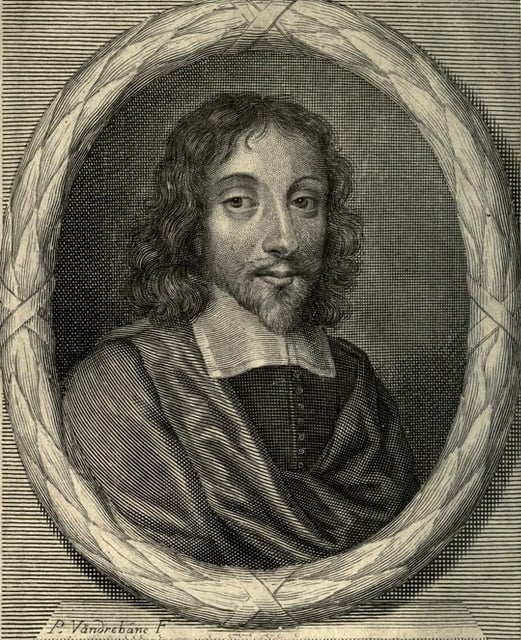 In the latter half of the 17th century the English polymath Thomas Browne wrote Musaeum Clausum, an imagined inventory of ‘remarkable books, antiquities, pictures and rarities of several kinds, scarce or never seen by any man now living’. Claire Preston explores Browne’s extraordinary catalogue amid the wider context of a Renaissance preoccupation with lost intellectual treasures.
Almost as good as Presley: Caruso the pop idol
February 13, 2012
Music
When he died in 1921 the singer Enrico Caruso left behind him approximately 290 commercially released recordings, and a significant mark upon on the opera world including more than 800 appearances at the New York Met. John Potter, singer and author of Tenor: History of a Voice, explores Caruso’s popular appeal and how he straddled the divide between ‘pop’ and ‘classical’.
Phillis Wheatley: an Eighteenth-Century Genius in Bondage
February 6, 2012
Poems & Literature & History
Transported as a slave from West Africa to America when just a child, Phillis Wheatley published in 1773 at the age of twenty her Poems on Various Subjects, Religious and Moral. Vincent Carretta takes a look at the remarkable life of the first ever African-American woman to be published.
An Unlikely Lunch: When Maupassant met Swinburne
January 24, 2012
Poems & Literature & History
Julian Barnes on when a young Guy de Maupassant was invited to lunch at the holiday cottage of Algernon Swinburne. A flayed human hand, pornography, the serving of monkey meat, and inordinate amounts of alcohol, all made for a truly strange Anglo-French encounter.
Selma Lagerlöf: Surface and Depth
January 11, 2012
Books & Literature
In 2011 many countries around the world welcomed The Wonderful Adventures of Nils and the other works of the Swedish writer Selma Lagerlöf into the public domain. Jenny Watson looks at the importance of Lagerlöf’s oeuvre and the complex depths beneath her seemingly simple tales and public persona.
Robert Southey’s Dreams Revisited
December 5, 2011
Poems & Literature
As well as being poet laureate for 30 years and a prolific writer of letters, Robert Southey was an avid recorder of his dreams. W.A. Speck, author of Robert Southey: Entire Man of Letters, explores the poet’s dream diary and the importance of dreams in his work.
The Mysteries of Nature and Art
November 28, 2011
Books & Science & Art
In the latter half of the 17th century the English polymath Thomas Browne wrote Musaeum Clausum, an imagined inventory of ‘remarkable books, antiquities, pictures and rarities of several kinds, scarce or never seen by any man now living’. Claire Preston explores Browne’s extraordinary catalogue amid the wider context of a Renaissance preoccupation with lost intellectual treasures.
Almost as good as Presley: Caruso the pop idol
February 13, 2012
Music
When he died in 1921 the singer Enrico Caruso left behind him approximately 290 commercially released recordings, and a significant mark upon on the opera world including more than 800 appearances at the New York Met. John Potter, singer and author of Tenor: History of a Voice, explores Caruso’s popular appeal and how he straddled the divide between ‘pop’ and ‘classical’.
Phillis Wheatley: an Eighteenth-Century Genius in Bondage
February 6, 2012
Poems & Literature & History
Transported as a slave from West Africa to America when just a child, Phillis Wheatley published in 1773 at the age of twenty her Poems on Various Subjects, Religious and Moral. Vincent Carretta takes a look at the remarkable life of the first ever African-American woman to be published.
An Unlikely Lunch: When Maupassant met Swinburne
January 24, 2012
Poems & Literature & History
Julian Barnes on when a young Guy de Maupassant was invited to lunch at the holiday cottage of Algernon Swinburne. A flayed human hand, pornography, the serving of monkey meat, and inordinate amounts of alcohol, all made for a truly strange Anglo-French encounter.
Selma Lagerlöf: Surface and Depth
January 11, 2012
Books & Literature
In 2011 many countries around the world welcomed The Wonderful Adventures of Nils and the other works of the Swedish writer Selma Lagerlöf into the public domain. Jenny Watson looks at the importance of Lagerlöf’s oeuvre and the complex depths beneath her seemingly simple tales and public persona.
Robert Southey’s Dreams Revisited
December 5, 2011
Poems & Literature
As well as being poet laureate for 30 years and a prolific writer of letters, Robert Southey was an avid recorder of his dreams. W.A. Speck, author of Robert Southey: Entire Man of Letters, explores the poet’s dream diary and the importance of dreams in his work.
The Mysteries of Nature and Art
November 28, 2011
Books & Science & Art
 Julie Gardham, Senior Assistant Librarian at University of Glasgow’s Special Collections Department, takes a look at the book that was said to have spurred a young Isaac Newton onto the scientific path, The Mysteries of Nature and Art by John Bate.
The Tragedy of Fate and the Tragedy of Culture: Heinrich von Kleist’s The Schroffenstein Family
November 21, 2011
Literature
Julie Gardham, Senior Assistant Librarian at University of Glasgow’s Special Collections Department, takes a look at the book that was said to have spurred a young Isaac Newton onto the scientific path, The Mysteries of Nature and Art by John Bate.
The Tragedy of Fate and the Tragedy of Culture: Heinrich von Kleist’s The Schroffenstein Family
November 21, 2011
Literature
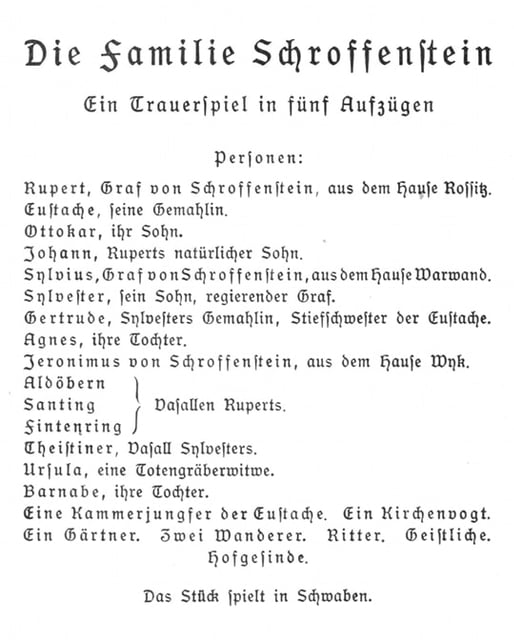 On 21st November 1811, on a lake’s edge near Potsdam, a 34-year-old Kleist shot himself dead in a suicide pact with his terminally ill lover. He left behind him just under a decade of intense literary output which has established him as one of the most important writers of the German romantic period. On the bicentenary of his death, Kleist scholar Steven Howe explores the importance of his first dramatic work and how in it can be seen the themes of his later masterpieces.
The Memoirs of Joseph Grimaldi
November 14, 2011
Books & History
On 21st November 1811, on a lake’s edge near Potsdam, a 34-year-old Kleist shot himself dead in a suicide pact with his terminally ill lover. He left behind him just under a decade of intense literary output which has established him as one of the most important writers of the German romantic period. On the bicentenary of his death, Kleist scholar Steven Howe explores the importance of his first dramatic work and how in it can be seen the themes of his later masterpieces.
The Memoirs of Joseph Grimaldi
November 14, 2011
Books & History
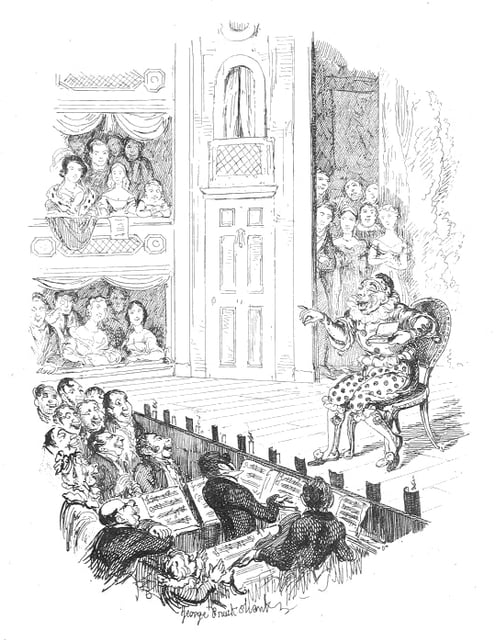 Andrew McConnell Stott, author of The Pantomime Life of Joseph Grimaldi, introduces the life and memoirs of the most famous and celebrated of English clowns.
Peter The Wild Boy
November 7, 2011
History
Andrew McConnell Stott, author of The Pantomime Life of Joseph Grimaldi, introduces the life and memoirs of the most famous and celebrated of English clowns.
Peter The Wild Boy
November 7, 2011
History
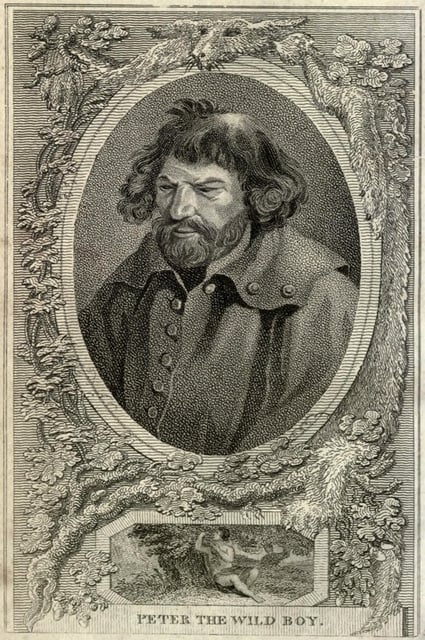 Lucy Worsley, Chief Curator at Historic Royal Palaces and author of Courtiers: The Secret History of the Georgian Court, on the strange case of the feral child found in the woods in northern Germany and brought to live in the court of George I.
On Benjamin’s Public (Oeuvre)
October 31, 2011
Literature & Philosophy & History
Lucy Worsley, Chief Curator at Historic Royal Palaces and author of Courtiers: The Secret History of the Georgian Court, on the strange case of the feral child found in the woods in northern Germany and brought to live in the court of George I.
On Benjamin’s Public (Oeuvre)
October 31, 2011
Literature & Philosophy & History
 On the run from the Nazis in 1940, the philosopher, literary critic and essayist Walter Benjamin committed suicide in the Spanish border town of Portbou. In 2011, over 70 years later, his writings enter the public domain in many countries around the world. Anca Pusca, author of Walter Benjamin: The Aesthetics of Change, reflects on the relevance of Benjamin’s oeuvre in a digital age, and the implications of his work becoming freely available online.
Navigating Dürer’s Woodcuts for The Ship of Fools
October 25, 2011
Books & Art & Religion
On the run from the Nazis in 1940, the philosopher, literary critic and essayist Walter Benjamin committed suicide in the Spanish border town of Portbou. In 2011, over 70 years later, his writings enter the public domain in many countries around the world. Anca Pusca, author of Walter Benjamin: The Aesthetics of Change, reflects on the relevance of Benjamin’s oeuvre in a digital age, and the implications of his work becoming freely available online.
Navigating Dürer’s Woodcuts for The Ship of Fools
October 25, 2011
Books & Art & Religion
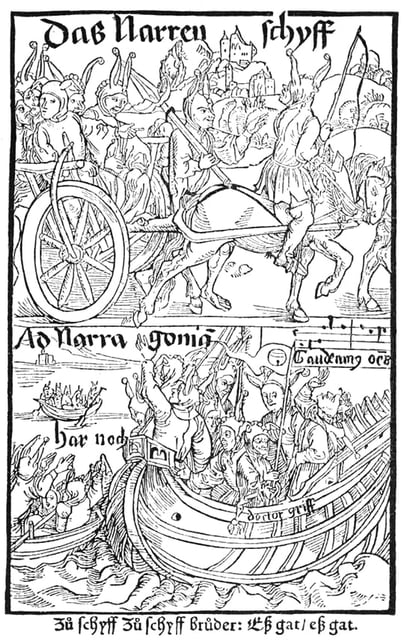 At the start of his career, as a young man in his twenties, Albrecht Dürer created a series of woodcuts to illustrate Sebastian Brant’s The Ship of Fools of 1494. Dürer scholar Rangsook Yoon explores the significance of these early pieces and how in their subtlety of allegory they show promise of his masterpieces to come.
What Makes Franz Liszt Still Important?
October 17, 2011
Music
At the start of his career, as a young man in his twenties, Albrecht Dürer created a series of woodcuts to illustrate Sebastian Brant’s The Ship of Fools of 1494. Dürer scholar Rangsook Yoon explores the significance of these early pieces and how in their subtlety of allegory they show promise of his masterpieces to come.
What Makes Franz Liszt Still Important?
October 17, 2011
Music
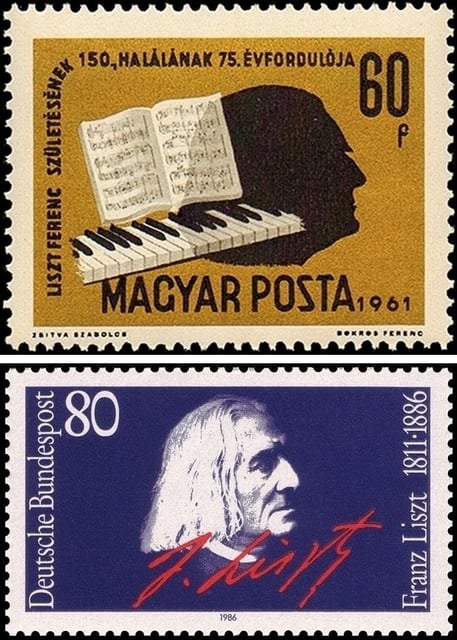 This week sees the 200th anniversary of the birth of Franz Liszt. Leon Botstein, President of Bard College and music director and principal conductor of the American Symphony Orchestra, explores what we can still learn from the life and music of Liszt.
Stories of a Hollow Earth
October 10, 2011
Books & Literature
This week sees the 200th anniversary of the birth of Franz Liszt. Leon Botstein, President of Bard College and music director and principal conductor of the American Symphony Orchestra, explores what we can still learn from the life and music of Liszt.
Stories of a Hollow Earth
October 10, 2011
Books & Literature
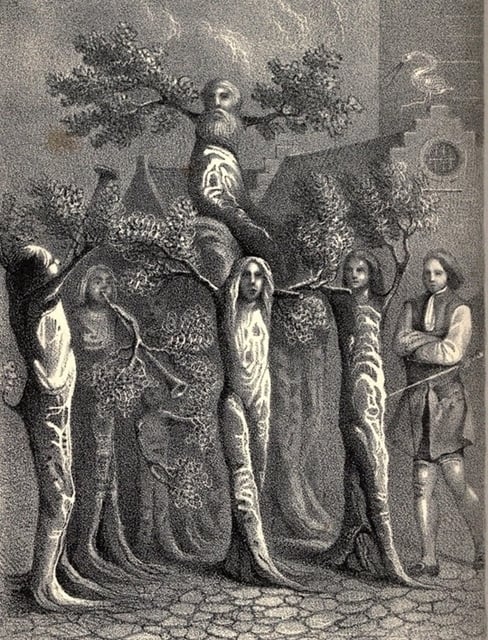 In 1741 the Norwegian-Danish author Ludvig Holberg published Klimii Iter Subterraneum, a satirical science-fiction/fantasy novel detailing the adventures of its hero Niels Klim in a utopian society existing beneath the surface of the earth. Peter Fitting, author of Subterranean Worlds: A Critical Anthology, explores Holberg’s book in the wider context of the hollow earth theory.
A Few Words about F. Scott Fitzgerald
September 26, 2011
Books & Literature
In 1741 the Norwegian-Danish author Ludvig Holberg published Klimii Iter Subterraneum, a satirical science-fiction/fantasy novel detailing the adventures of its hero Niels Klim in a utopian society existing beneath the surface of the earth. Peter Fitting, author of Subterranean Worlds: A Critical Anthology, explores Holberg’s book in the wider context of the hollow earth theory.
A Few Words about F. Scott Fitzgerald
September 26, 2011
Books & Literature
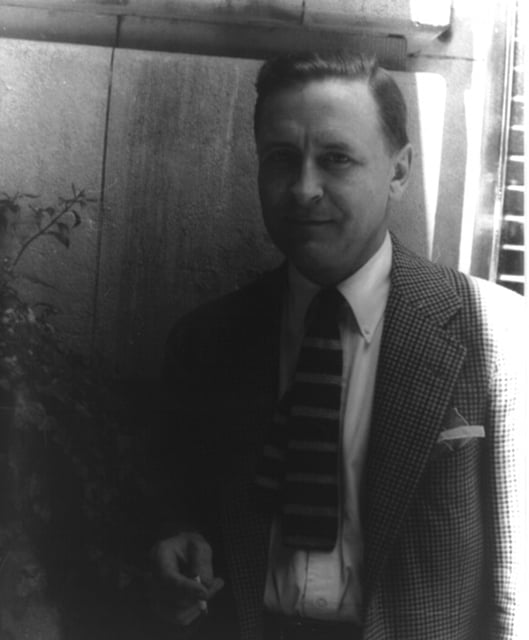 In most countries around the world, 2011 saw the writings of F. Scott Fitzgerald enter the public domain. Scott Donaldson, author of the biography Fool For Love: F. Scott Fitzgerald, explores the obscuring nature of his legend and the role that women played in his life and work.
Aspiring to a Higher Plane
September 19, 2011
Books & Literature & Science & Philosophy
In most countries around the world, 2011 saw the writings of F. Scott Fitzgerald enter the public domain. Scott Donaldson, author of the biography Fool For Love: F. Scott Fitzgerald, explores the obscuring nature of his legend and the role that women played in his life and work.
Aspiring to a Higher Plane
September 19, 2011
Books & Literature & Science & Philosophy
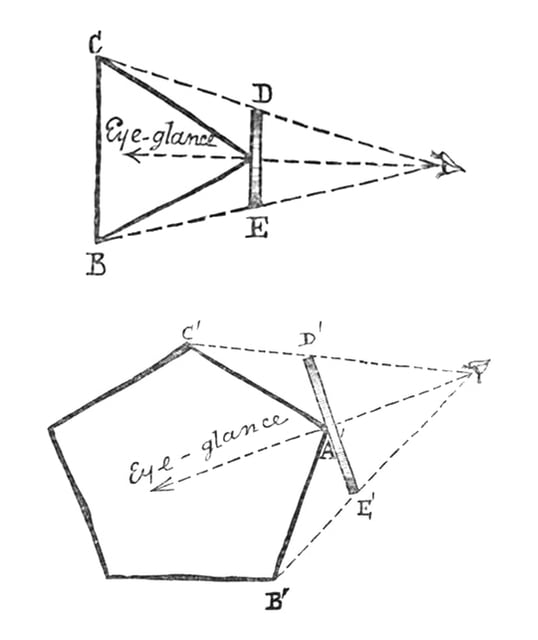 In 1884 Edwin Abbott Abbott published Flatland: A Romance of Many Dimensions, the first ever book that could be described as ‘mathematical fiction’. Ian Stewart, author of Flatterland and The Annotated Flatland, introduces the strange tale of the geometric adventures of A. Square.
Robert Fludd and His Images of The Divine
September 13, 2011
Books & Science & Philosophy & Art & Religion
In 1884 Edwin Abbott Abbott published Flatland: A Romance of Many Dimensions, the first ever book that could be described as ‘mathematical fiction’. Ian Stewart, author of Flatterland and The Annotated Flatland, introduces the strange tale of the geometric adventures of A. Square.
Robert Fludd and His Images of The Divine
September 13, 2011
Books & Science & Philosophy & Art & Religion
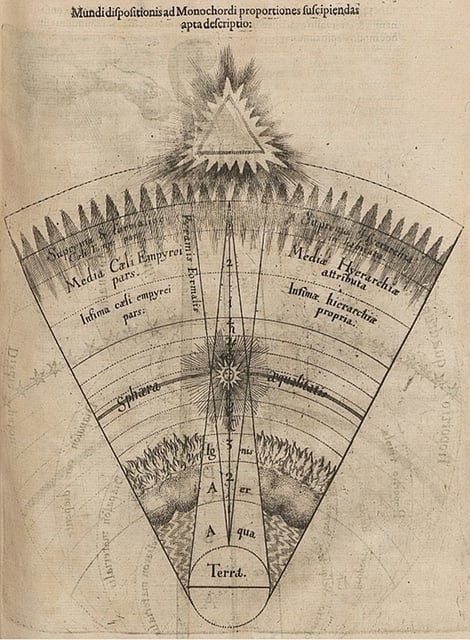 Between 1617 and 1621 the English physician and polymath Robert Fludd published his masterwork Utriusque Cosmi, a book split into two volumes and packed with over 60 intricate engravings. Urszula Szulakowska explores the philosophical and theological ideas behind the extraordinary images found in the second part of the work.
Dog Stories from The Spectator
September 5, 2011
Books
Between 1617 and 1621 the English physician and polymath Robert Fludd published his masterwork Utriusque Cosmi, a book split into two volumes and packed with over 60 intricate engravings. Urszula Szulakowska explores the philosophical and theological ideas behind the extraordinary images found in the second part of the work.
Dog Stories from The Spectator
September 5, 2011
Books
 Dogs who shop, bury frogs, and take 800-mile solo round trips by rail – writer and broadcaster Frank Key gives a brief tour of the strange and delightful Dog Stories from The Spectator.
Geronimo: The Warrior
August 29, 2011
Books & History
Dogs who shop, bury frogs, and take 800-mile solo round trips by rail – writer and broadcaster Frank Key gives a brief tour of the strange and delightful Dog Stories from The Spectator.
Geronimo: The Warrior
August 29, 2011
Books & History
 In 1906, Geronimo published his autobiography recounting the fascinating story of his life, from his years as a resistance fighter, to his capture and subsequent period of celebrity in which he appeared at the 1904 St Louis World Fair and met President Roosevelt. Edward Rielly, author of Legends of American Indian Resistance, tells of the tragic massacre which underpinned his life.
Accuracy and Elegance in Cheselden’s Osteographia (1733)
August 22, 2011
Books & Science & Art
In 1906, Geronimo published his autobiography recounting the fascinating story of his life, from his years as a resistance fighter, to his capture and subsequent period of celebrity in which he appeared at the 1904 St Louis World Fair and met President Roosevelt. Edward Rielly, author of Legends of American Indian Resistance, tells of the tragic massacre which underpinned his life.
Accuracy and Elegance in Cheselden’s Osteographia (1733)
August 22, 2011
Books & Science & Art
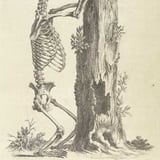 With its novel vignettes and its use of a camera obscura in the production of the plates, William Cheselden’s Osteographia, is recognized as a landmark in the history of anatomical illustration. Monique Kornell looks at its unique blend of accuracy and elegance.
Next page
With its novel vignettes and its use of a camera obscura in the production of the plates, William Cheselden’s Osteographia, is recognized as a landmark in the history of anatomical illustration. Monique Kornell looks at its unique blend of accuracy and elegance.
Next page
 In the latter half of the 17th century the English polymath Thomas Browne wrote Musaeum Clausum, an imagined inventory of ‘remarkable books, antiquities, pictures and rarities of several kinds, scarce or never seen by any man now living’. Claire Preston explores Browne’s extraordinary catalogue amid the wider context of a Renaissance preoccupation with lost intellectual treasures.
Almost as good as Presley: Caruso the pop idol
February 13, 2012
Music
When he died in 1921 the singer Enrico Caruso left behind him approximately 290 commercially released recordings, and a significant mark upon on the opera world including more than 800 appearances at the New York Met. John Potter, singer and author of Tenor: History of a Voice, explores Caruso’s popular appeal and how he straddled the divide between ‘pop’ and ‘classical’.
Phillis Wheatley: an Eighteenth-Century Genius in Bondage
February 6, 2012
Poems & Literature & History
Transported as a slave from West Africa to America when just a child, Phillis Wheatley published in 1773 at the age of twenty her Poems on Various Subjects, Religious and Moral. Vincent Carretta takes a look at the remarkable life of the first ever African-American woman to be published.
An Unlikely Lunch: When Maupassant met Swinburne
January 24, 2012
Poems & Literature & History
Julian Barnes on when a young Guy de Maupassant was invited to lunch at the holiday cottage of Algernon Swinburne. A flayed human hand, pornography, the serving of monkey meat, and inordinate amounts of alcohol, all made for a truly strange Anglo-French encounter.
Selma Lagerlöf: Surface and Depth
January 11, 2012
Books & Literature
In 2011 many countries around the world welcomed The Wonderful Adventures of Nils and the other works of the Swedish writer Selma Lagerlöf into the public domain. Jenny Watson looks at the importance of Lagerlöf’s oeuvre and the complex depths beneath her seemingly simple tales and public persona.
Robert Southey’s Dreams Revisited
December 5, 2011
Poems & Literature
As well as being poet laureate for 30 years and a prolific writer of letters, Robert Southey was an avid recorder of his dreams. W.A. Speck, author of Robert Southey: Entire Man of Letters, explores the poet’s dream diary and the importance of dreams in his work.
The Mysteries of Nature and Art
November 28, 2011
Books & Science & Art
In the latter half of the 17th century the English polymath Thomas Browne wrote Musaeum Clausum, an imagined inventory of ‘remarkable books, antiquities, pictures and rarities of several kinds, scarce or never seen by any man now living’. Claire Preston explores Browne’s extraordinary catalogue amid the wider context of a Renaissance preoccupation with lost intellectual treasures.
Almost as good as Presley: Caruso the pop idol
February 13, 2012
Music
When he died in 1921 the singer Enrico Caruso left behind him approximately 290 commercially released recordings, and a significant mark upon on the opera world including more than 800 appearances at the New York Met. John Potter, singer and author of Tenor: History of a Voice, explores Caruso’s popular appeal and how he straddled the divide between ‘pop’ and ‘classical’.
Phillis Wheatley: an Eighteenth-Century Genius in Bondage
February 6, 2012
Poems & Literature & History
Transported as a slave from West Africa to America when just a child, Phillis Wheatley published in 1773 at the age of twenty her Poems on Various Subjects, Religious and Moral. Vincent Carretta takes a look at the remarkable life of the first ever African-American woman to be published.
An Unlikely Lunch: When Maupassant met Swinburne
January 24, 2012
Poems & Literature & History
Julian Barnes on when a young Guy de Maupassant was invited to lunch at the holiday cottage of Algernon Swinburne. A flayed human hand, pornography, the serving of monkey meat, and inordinate amounts of alcohol, all made for a truly strange Anglo-French encounter.
Selma Lagerlöf: Surface and Depth
January 11, 2012
Books & Literature
In 2011 many countries around the world welcomed The Wonderful Adventures of Nils and the other works of the Swedish writer Selma Lagerlöf into the public domain. Jenny Watson looks at the importance of Lagerlöf’s oeuvre and the complex depths beneath her seemingly simple tales and public persona.
Robert Southey’s Dreams Revisited
December 5, 2011
Poems & Literature
As well as being poet laureate for 30 years and a prolific writer of letters, Robert Southey was an avid recorder of his dreams. W.A. Speck, author of Robert Southey: Entire Man of Letters, explores the poet’s dream diary and the importance of dreams in his work.
The Mysteries of Nature and Art
November 28, 2011
Books & Science & Art
 Julie Gardham, Senior Assistant Librarian at University of Glasgow’s Special Collections Department, takes a look at the book that was said to have spurred a young Isaac Newton onto the scientific path, The Mysteries of Nature and Art by John Bate.
The Tragedy of Fate and the Tragedy of Culture: Heinrich von Kleist’s The Schroffenstein Family
November 21, 2011
Literature
Julie Gardham, Senior Assistant Librarian at University of Glasgow’s Special Collections Department, takes a look at the book that was said to have spurred a young Isaac Newton onto the scientific path, The Mysteries of Nature and Art by John Bate.
The Tragedy of Fate and the Tragedy of Culture: Heinrich von Kleist’s The Schroffenstein Family
November 21, 2011
Literature
 On 21st November 1811, on a lake’s edge near Potsdam, a 34-year-old Kleist shot himself dead in a suicide pact with his terminally ill lover. He left behind him just under a decade of intense literary output which has established him as one of the most important writers of the German romantic period. On the bicentenary of his death, Kleist scholar Steven Howe explores the importance of his first dramatic work and how in it can be seen the themes of his later masterpieces.
The Memoirs of Joseph Grimaldi
November 14, 2011
Books & History
On 21st November 1811, on a lake’s edge near Potsdam, a 34-year-old Kleist shot himself dead in a suicide pact with his terminally ill lover. He left behind him just under a decade of intense literary output which has established him as one of the most important writers of the German romantic period. On the bicentenary of his death, Kleist scholar Steven Howe explores the importance of his first dramatic work and how in it can be seen the themes of his later masterpieces.
The Memoirs of Joseph Grimaldi
November 14, 2011
Books & History
 Andrew McConnell Stott, author of The Pantomime Life of Joseph Grimaldi, introduces the life and memoirs of the most famous and celebrated of English clowns.
Peter The Wild Boy
November 7, 2011
History
Andrew McConnell Stott, author of The Pantomime Life of Joseph Grimaldi, introduces the life and memoirs of the most famous and celebrated of English clowns.
Peter The Wild Boy
November 7, 2011
History
 Lucy Worsley, Chief Curator at Historic Royal Palaces and author of Courtiers: The Secret History of the Georgian Court, on the strange case of the feral child found in the woods in northern Germany and brought to live in the court of George I.
On Benjamin’s Public (Oeuvre)
October 31, 2011
Literature & Philosophy & History
Lucy Worsley, Chief Curator at Historic Royal Palaces and author of Courtiers: The Secret History of the Georgian Court, on the strange case of the feral child found in the woods in northern Germany and brought to live in the court of George I.
On Benjamin’s Public (Oeuvre)
October 31, 2011
Literature & Philosophy & History
 On the run from the Nazis in 1940, the philosopher, literary critic and essayist Walter Benjamin committed suicide in the Spanish border town of Portbou. In 2011, over 70 years later, his writings enter the public domain in many countries around the world. Anca Pusca, author of Walter Benjamin: The Aesthetics of Change, reflects on the relevance of Benjamin’s oeuvre in a digital age, and the implications of his work becoming freely available online.
Navigating Dürer’s Woodcuts for The Ship of Fools
October 25, 2011
Books & Art & Religion
On the run from the Nazis in 1940, the philosopher, literary critic and essayist Walter Benjamin committed suicide in the Spanish border town of Portbou. In 2011, over 70 years later, his writings enter the public domain in many countries around the world. Anca Pusca, author of Walter Benjamin: The Aesthetics of Change, reflects on the relevance of Benjamin’s oeuvre in a digital age, and the implications of his work becoming freely available online.
Navigating Dürer’s Woodcuts for The Ship of Fools
October 25, 2011
Books & Art & Religion
 At the start of his career, as a young man in his twenties, Albrecht Dürer created a series of woodcuts to illustrate Sebastian Brant’s The Ship of Fools of 1494. Dürer scholar Rangsook Yoon explores the significance of these early pieces and how in their subtlety of allegory they show promise of his masterpieces to come.
What Makes Franz Liszt Still Important?
October 17, 2011
Music
At the start of his career, as a young man in his twenties, Albrecht Dürer created a series of woodcuts to illustrate Sebastian Brant’s The Ship of Fools of 1494. Dürer scholar Rangsook Yoon explores the significance of these early pieces and how in their subtlety of allegory they show promise of his masterpieces to come.
What Makes Franz Liszt Still Important?
October 17, 2011
Music
 This week sees the 200th anniversary of the birth of Franz Liszt. Leon Botstein, President of Bard College and music director and principal conductor of the American Symphony Orchestra, explores what we can still learn from the life and music of Liszt.
Stories of a Hollow Earth
October 10, 2011
Books & Literature
This week sees the 200th anniversary of the birth of Franz Liszt. Leon Botstein, President of Bard College and music director and principal conductor of the American Symphony Orchestra, explores what we can still learn from the life and music of Liszt.
Stories of a Hollow Earth
October 10, 2011
Books & Literature
 In 1741 the Norwegian-Danish author Ludvig Holberg published Klimii Iter Subterraneum, a satirical science-fiction/fantasy novel detailing the adventures of its hero Niels Klim in a utopian society existing beneath the surface of the earth. Peter Fitting, author of Subterranean Worlds: A Critical Anthology, explores Holberg’s book in the wider context of the hollow earth theory.
A Few Words about F. Scott Fitzgerald
September 26, 2011
Books & Literature
In 1741 the Norwegian-Danish author Ludvig Holberg published Klimii Iter Subterraneum, a satirical science-fiction/fantasy novel detailing the adventures of its hero Niels Klim in a utopian society existing beneath the surface of the earth. Peter Fitting, author of Subterranean Worlds: A Critical Anthology, explores Holberg’s book in the wider context of the hollow earth theory.
A Few Words about F. Scott Fitzgerald
September 26, 2011
Books & Literature
 In most countries around the world, 2011 saw the writings of F. Scott Fitzgerald enter the public domain. Scott Donaldson, author of the biography Fool For Love: F. Scott Fitzgerald, explores the obscuring nature of his legend and the role that women played in his life and work.
Aspiring to a Higher Plane
September 19, 2011
Books & Literature & Science & Philosophy
In most countries around the world, 2011 saw the writings of F. Scott Fitzgerald enter the public domain. Scott Donaldson, author of the biography Fool For Love: F. Scott Fitzgerald, explores the obscuring nature of his legend and the role that women played in his life and work.
Aspiring to a Higher Plane
September 19, 2011
Books & Literature & Science & Philosophy
 In 1884 Edwin Abbott Abbott published Flatland: A Romance of Many Dimensions, the first ever book that could be described as ‘mathematical fiction’. Ian Stewart, author of Flatterland and The Annotated Flatland, introduces the strange tale of the geometric adventures of A. Square.
Robert Fludd and His Images of The Divine
September 13, 2011
Books & Science & Philosophy & Art & Religion
In 1884 Edwin Abbott Abbott published Flatland: A Romance of Many Dimensions, the first ever book that could be described as ‘mathematical fiction’. Ian Stewart, author of Flatterland and The Annotated Flatland, introduces the strange tale of the geometric adventures of A. Square.
Robert Fludd and His Images of The Divine
September 13, 2011
Books & Science & Philosophy & Art & Religion
 Between 1617 and 1621 the English physician and polymath Robert Fludd published his masterwork Utriusque Cosmi, a book split into two volumes and packed with over 60 intricate engravings. Urszula Szulakowska explores the philosophical and theological ideas behind the extraordinary images found in the second part of the work.
Dog Stories from The Spectator
September 5, 2011
Books
Between 1617 and 1621 the English physician and polymath Robert Fludd published his masterwork Utriusque Cosmi, a book split into two volumes and packed with over 60 intricate engravings. Urszula Szulakowska explores the philosophical and theological ideas behind the extraordinary images found in the second part of the work.
Dog Stories from The Spectator
September 5, 2011
Books
 Dogs who shop, bury frogs, and take 800-mile solo round trips by rail – writer and broadcaster Frank Key gives a brief tour of the strange and delightful Dog Stories from The Spectator.
Geronimo: The Warrior
August 29, 2011
Books & History
Dogs who shop, bury frogs, and take 800-mile solo round trips by rail – writer and broadcaster Frank Key gives a brief tour of the strange and delightful Dog Stories from The Spectator.
Geronimo: The Warrior
August 29, 2011
Books & History
 In 1906, Geronimo published his autobiography recounting the fascinating story of his life, from his years as a resistance fighter, to his capture and subsequent period of celebrity in which he appeared at the 1904 St Louis World Fair and met President Roosevelt. Edward Rielly, author of Legends of American Indian Resistance, tells of the tragic massacre which underpinned his life.
Accuracy and Elegance in Cheselden’s Osteographia (1733)
August 22, 2011
Books & Science & Art
In 1906, Geronimo published his autobiography recounting the fascinating story of his life, from his years as a resistance fighter, to his capture and subsequent period of celebrity in which he appeared at the 1904 St Louis World Fair and met President Roosevelt. Edward Rielly, author of Legends of American Indian Resistance, tells of the tragic massacre which underpinned his life.
Accuracy and Elegance in Cheselden’s Osteographia (1733)
August 22, 2011
Books & Science & Art
 With its novel vignettes and its use of a camera obscura in the production of the plates, William Cheselden’s Osteographia, is recognized as a landmark in the history of anatomical illustration. Monique Kornell looks at its unique blend of accuracy and elegance.
Next page
With its novel vignettes and its use of a camera obscura in the production of the plates, William Cheselden’s Osteographia, is recognized as a landmark in the history of anatomical illustration. Monique Kornell looks at its unique blend of accuracy and elegance.
Next page